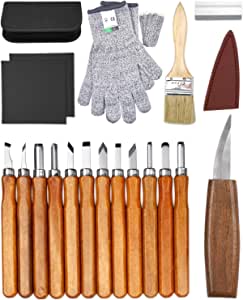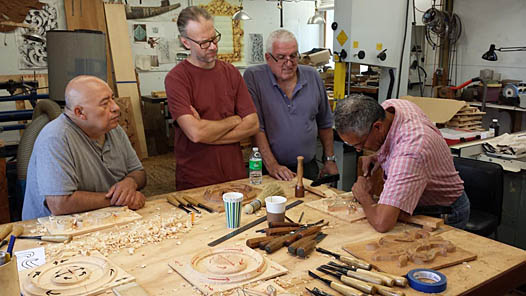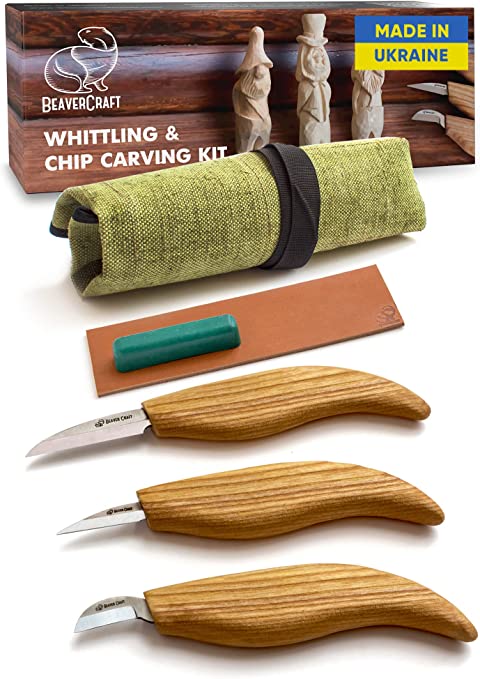
If you have ever dreamed of creating wood-carved caricatures, this is the right place. You'll find information about safety and design. It is possible to transform a basic caricature into something extraordinary. For those who are unsure where to start, here are some ideas to make your caricature truly unique. Besides, there's always the option to take classes from caricaturists.
Techniques
Wood carving caricatures offer a unique way to create sculpture. These caricatures are funny and tell a story with no words. Caricature is a fictionalized representation of a person. Wood carving carvers, like Dave Stetson, adhere to a strict code of realism and have certain rules that should be followed to create an effective caricature. This article will provide the basics of caricature carving and provide tips for creating one.
First, the technique of carving an astronaut requires a great deal of focus. To carve an astronaut, you will need to use whittling knives or spoon carving knives. These are delicate tools. You can also make templates to aid in carving the astronaut. A good tutorial will offer step-by–step instructions on how you can finish your caricature. If you are on a limited budget, you may consider buying a tutorial.
Designs
There are many ways to create amusing wood carved caricatures. You can start by using a pattern. You can also purchase a cutout of cardboard and use the same patterns to create different caricatures. You can also follow the steps of a caricature carving tutorial. This article will show you how to carve a caricature using the most effective techniques and designs.

Fred created his first caricature, titled "Aristocrats of the Roads". It depicted two men-wanderers. It was made out of Honduras Mahogany. Fred entered it in competitions and won many awards. It was also featured in the Chipping Away Catalog. Fred created a second Luciano Pavarotti caricature in 2009. He won a Second Runner up Award at a national woodcarving convention.
Eyes
It is important to ensure realistic looking eyes when carving caricatures. A realistic-looking eye is fine, but a poorly executed caricature can leave viewers dissatisfied. Take a picture of an existing carving to ensure that your eyes align properly. Then, follow the steps in the photograph.
The next step in carving the eyes is to determine the shape of the eyes. Some carvers use the exact same eye shape, while others may use a different one. Some carvers use different shapes to make more convincing eyes. To make your eyes symmetrical, you can use stop cuts to carve the lower eyelid. The iris and pupil will also need to be carved. You can now move on to the next stage of carving the caricature.
Safety
They are distinctive in their designs. These caricatures can tell a story with no words and are created by skilled artists who take great care to ensure accuracy. Caricatures can be described as representations of people and things that are exaggerated in order to convey an impression or satire. Wood carving carver Dave Stetson has established strict rules for carver safety and quality, as well as providing information for consumers.
First clean the wood and remove pencil marks before carving a caricature. You can wash the wood with soapy water or dish soap. For the neck and head carving, you will need a 60-degree V shape tool. A 60 degree V-shaped tool, which cuts wood quickly, can be useful in carving. Ramelson's 60-degree V-shaped Carving Tool is an excellent choice. It is very sharp and easy-to-use.
Materials

You can create animal caricatures with wire and wood if you're looking for a challenging and fun way to carve animals. Animal caricatures can be just as fun as human caricatures. However, they can communicate a story even without words. Caricatures are exaggerated realisms. For beginners, carving caricatures can be difficult. However, for more skilled carvers, there are many materials available.
You will need chisels as well as a board of wood to complete your carving. You also need a Hammer. Acrylic white paint can be used as the base layer. It is available at craft stores. The second layer can be added once the base layer is completed. The second layer will be a mixture of golden brown paint and some burnt sienna (Academy). For the face, use 2 drops sunkissed purple.
FAQ
What's the difference?
Hobbyists like making things with wood. Professionals focus more on quality. Hobbyists often take pride in the creations they make and often share them to family and friends. Professionals will spend hours researching designs before they begin working on a project. Professionals will be meticulous about all aspects of their work, from selecting the right materials to finishing it.
Do I have to refinish my furniture?
Yes! You don't have to hire a professional to refinish furniture. There are many ways you can do it yourself. Here are some ideas:
Use sandpaper on the surface to remove any stains or scratches. Use a clean cloth to wipe the surface.
Apply clear polyurethane finish. Allow furniture to dry completely before you move it around.
Use acrylic paint to paint furniture.
Instead of painting, use stain. The furniture will have a rich look thanks to the stain.
Use shellac wax. This will protect and shine the wood.
What type of wood should I choose?
Woodworking is a popular job that involves oak, pine and maple. Each type of wood has unique characteristics that affect the look and feel of the final product. Oak tends to be harder and darker than other woods. Birch, which is lighter and soft, is more heavy than mahogany. You also have the option of solid wood or veneers. Veneers are thin wood sheets that are glued together to form one layer.
What material would you recommend to start learning woodworking?
Start with softwoods, such as pine or poplar. When you feel confident with these two, move on towards hardwood.
What types of woods are best for furniture making?
Woods are classified according their hardness. Softwoods include pine, fir, cedar, and cypress. Because they resist rot, softwoods can be used to make outdoor furniture. These hardwoods include maple, mahogany and teak. They are generally indoors as they don't weather well outside.
Can I make my living doing this job?
Yes! Many woodworkers have this ability. According to the U.S. Bureau of Labor Statistics' (BLS), in May 2012 the median annual wage of woodworkers was $34,000 This is much higher than the national median of $31,000 per annum.
Statistics
- The U.S. Bureau of Labor Statistics (BLS) estimates that the number of jobs for woodworkers will decline by 4% between 2019 and 2029. (indeed.com)
- Woodworkers on the lower end of that spectrum, the bottom 10% to be exact, make roughly $24,000 a year, while the top 10% makes $108,000. (zippia.com)
- In 2014, there were just over 237,000 jobs for all woodworkers, with other wood product manufacturing employing 23 percent; wood kitchen cabinets and countertop manufacturing employing 21 percent. (theartcareerproject.com)
- Overall employment of woodworkers is projected to grow 8 percent from 2020 to 2030, about as fast as the average for all occupations. (bls.gov)
External Links
How To
How to make wood joints
This tutorial will demonstrate how to join two pieces together of wood. We will be using the "pocket-hole joint", which involves drilling holes in wood and then gluing them together. This method is great if your wood's straight and smooth. If your wood isn't straight or flat, you might want to try another method, such as dowel joinery. These are the steps
-
Drill Pocket Hole Joints. First, measure the area where you wish to place the pocket joint. You will then drill 3/4" deep holes through each piece of wood with a jigsaw, handheld drilling machine, or hand-held drill.
-
Sand Smooth. Sanding the edges of the wood will help to prevent the joint from splitting later.
-
Glue the two sides of the wood together. Apply glue to both ends of the wood. Allow it to cool for at least 5 minutes before you attach the pieces.
-
Connect the pieces. After the glue has dried properly, clamp the pieces together to make sure they are flush.
-
Trim Joinery. Trimming the joinery after glue has completely dried.
Be sure to leave enough space between each piece so that they can be turned inside-out.